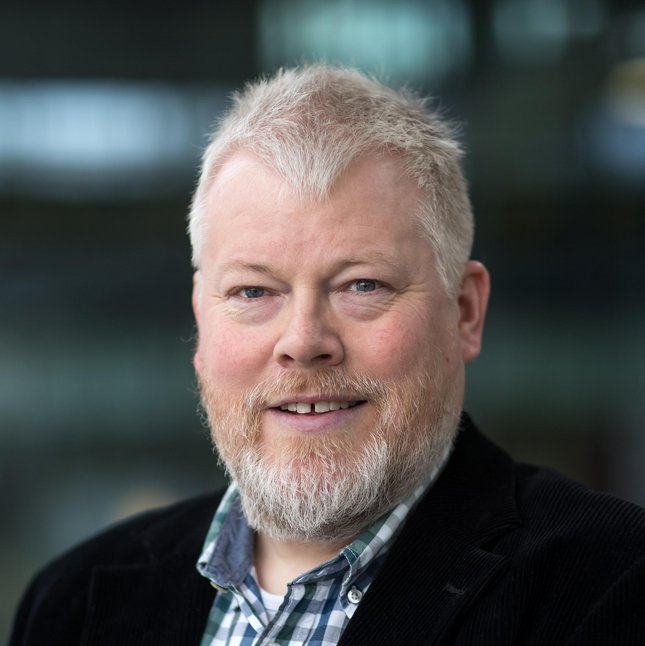
It’s an exciting time for Systems Engineering at HTSC: over two years since the first blog, we are setting up the first dedicated courses and Research Meet, due to take place next year. This will include a mix of industry and academic perspectives and student projects, with PhD and PDEng students discussing how they’ve applied Systems Engineering methods in their work. I would also like to take this opportunity to welcome our new colleague, Guido de Boer, who has extensive experience in the field of semiconductor equipment.
Sufficient, accessible and clear
Guido is supporting us in the creation of materials for the university to train students on ‘systems thinking’. Having worked at Mapper and ASML, he is now at the point where he wants to tell the world about his insights, what he found works and doesn’t work. How do you go about developing a complex system? What techniques do you need? What is the correct code and what are the interfaces to other parts or systems?
In addition to the general elements, Guido understands that it’s good to teach people how to do things practically. If you want to talk about requirements for a system, how do you manage them or agree on them within a team? He has a demonstrated a wide variety of down-to-earth methods to manage the essential information for system development in a way that is sufficient (you keep all the data you need), accessible (so people can use it) and clear (in that it creates an overview of what’s going on). Guido is keen to see how these ideas of his can be transferred to a new generation of engineers.
Bureaucracy versus agility
In Systems Engineering, less can often be more. If you develop something with a small group, maybe five people, it’s easier than when you do it with 1000 people! Things tend to break down if the groups get too large and become bureaucratic. If you split the group of 1000 into groups of 50 and give them a well-scoped task, you can find a balance between making sure everything fits together in a system and not spending too much time on bureaucracy.
This is the sort of approach we will take with our new courses. The awkward thing about Systems Engineering is that it’s central to everything at the university. It doesn’t seem to belong to any department in particular, but we’re close to creating a landing spot for a part-time associate professor. This will be the crystallization point for trainings, courses and research in this field. These will be defined in blocks and we’re aiming to have the initial course ready in the first half of next year.
Choosing a flavor
Defining these courses is a balancing act too. On the one hand, there’s a very generic aspect to Systems Engineering. This concerns principles of capturing requirements, breaking down the functions and so forth – the divide and conquer approach, let’s say. On the other hand, if you look at the application field, HTSC is concerned with the typical high-end, high-precision mechatronics that the Brainport area (and the Netherlands) is known for internationally.
"HTSC is concerned with the typical high-end, high-precision mechatronics that the Brainport area (and the Netherlands) is known for internationally.
High-tech systems are about agile development, and we have been using a different ‘flavor’ of Systems Engineering for this. You cannot buy a book on Systems Engineering of High-Tech Systems, but it is our ambition to write it and then teach it – a sort of reverse engineering of what companies are doing in this area. The end result will be a tailored kind of Systems Engineering which still has a specific area of application. A little bit less bureaucratic, a little more agile.
A topic in its own right
Speaking of improving efficiency, one notable speaker at the Research Meet will be Tim Wilschut, who did his PhD with Rijkswaterstaat on public infrastructure. The aim was to reduce the amount of variations in lock designs, as they need to update, upgrade and replace ten of locks in our rivers and canals in the coming years. Tim’s research concerned what’s called the Design Structure Matrix (DSM), a development of the N2 Matrix. This 2D matrix is used to compare, for example, requirements with functions by putting crosses where a requirement fulfills part of a function. This allows you to study the structure of a system. Tim used this tool to find commonalities between locks and has used his results to form a start-up, Ratio. It’s a nice illustration of how techniques for Systems Engineering and the development of high-tech systems make a good combination.
"it’s clear that systems thinking will become more important moving forward"
For me, the Research Meet signifies that the topic of Systems Engineering is becoming an explicit topic within HTSC and TU/e, one that deserves its own attention and afternoon of meetings. We’re now not only talking about detecting smaller particles or making more accurate structures but are also concerned with the way we do our work. We have techniques that we’re interested in and that we’re studying and improving.
Systems Engineering is a topic that’s often assumed to just ‘be there’ – it’s not worth talking about, it’s about the content rather than how you do things – but if you look at the complexity of the systems we’re developing and the contexts we need to take into account, like socio-economics and sustainability, it’s clear that systems thinking will become more important moving forward.
For more information, please contact us via htsc@tue.nl.